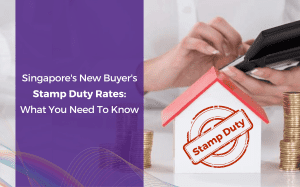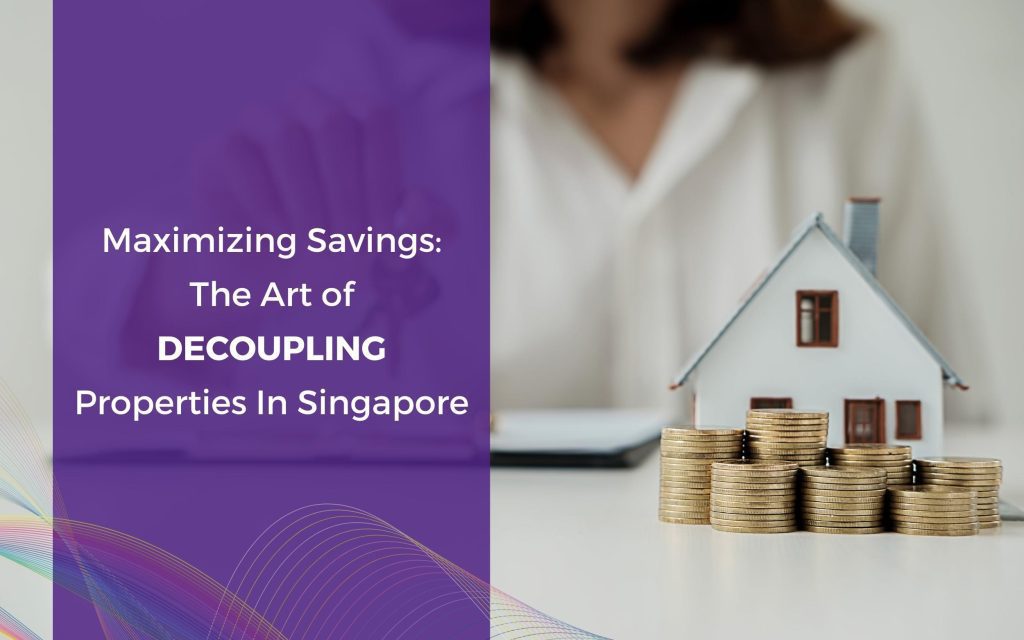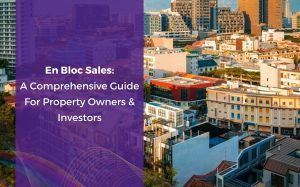
Singapore’s New Buyer’s Stamp Duty Rates: What You Need to Know
To increase the progressivity of the Buyer’s Stamp Duty (BSD)

Aligning with the objectives of Property Cooling Measures introduced by the Singapore government in December 2011, the Additional Buyers’ Stamp Duty or ABSD witnessed a hike in the latest round of property cooling measures that took effect on December 16 2021.
Thereafter, the effective ABSD rates for second and subsequent property purchases stand at 17% on the second and 25% on subsequent property purchases.
However, married couples in the country who aspire to own a second property for legacy or investment purposes can bypass ABSD with the “decoupling” strategy. Read on to know more…
“Decoupling” is a strategy utilized in the real estate industry where married Singaporean couples transfer property ownership from one individual to another.
As a result, the recipient is considered a first-time buyer and can purchase another property without incurring the Additional Buyer’s Stamp Duty (ABSD) cost.
For example, if a Singaporean citizen purchases a second property worth $1 million for investment purposes without decoupling, they would have to pay a minimum of $170,000 in ABSD fees. However, with Decoupling, they can save this amount and use it for other purposes such as furnishings, renovations etc.
The table below exhibits how much you can save from taking the decoupling route.
| Property Tax | Regular Route | Decoupling Route |
| Additional Buyer’s Stamp Duty (ABSD) | $170,000 | N/A |
| Buyer Stamp Duty (BSD) | $24,600 | $24,600 |
| Total | $194,600 | $24,600 |
Please note that the table only exhibits the cost of the ABSD and does not include outstanding home loans and the Central Provident Fund (CPF) costs.
When it comes to decoupling, there are two options for transferring ownership of a property.
1. Transfer as a Gift:
The most cost-effective way to decouple is to transfer ownership as a gift without receiving payment. This is only possible if the property is fully paid for and there are no outstanding mortgages.
2. Transfer by Sale:
In this method, one party buys the remaining property shares from their spouse. A lawyer or conveyancer is hired to draft a Sale and Purchase (S&P) agreement, which outlines the terms of the transaction. The buyer must pay the seller for their share of the property and any necessary fees, such as the Buyer’s Stamp Duty, to the Inland Revenue Authority of Singapore. The sale proceeds are then used to pay off any outstanding mortgages and CPF contributions before transferring ownership to the buyer.
In Singapore, co-owned properties are typically held either as Joint Tenancy, where all owners own the property together as a whole (50-50 share) or as Tenancy-in-Common, where each owner holds a specific share of the property (usually 99-1 share).
Joint Tenancy is usually the preferred method for married couples to hold their home. In Decoupling, it is assumed that both individuals own 50% of the property, and one partner will purchase the other’s share of 50%.
1. New Loan Arrangement:
When buying over the other party’s share in Decoupling, it is helpful to view the transaction from both the buyer’s and seller’s perspectives. For example, in a $1 million property held by a couple, Husband and Wife, in 50-50 shares, the Wife might sell her 50% share valued at $500,000 to the Husband. After the sale, the Wife will purchase a second property as a sole owner.
The amount owed for the partial sale/purchase of the current property will depend on the current holding type. If Wife and Husband currently hold the property as Tenancy-in-Common, with Wife holding 10% and Husband holding 90%, the Husband would only need to purchase Wife’s 10% share.
However, in most cases of Decoupling, the holding type will be Joint Tenancy (i.e., 50/50 share). Given that the amount to be purchased is often substantial, financing will be necessary for the Husband (the buyer), who will also need to refinance half of the outstanding loan amount.
Value of Property | $1,000,000 |
Existing Loan | $600,000* |
Manner of Holdings | 50-50 |
Financing part purchase from Wife | 75% * $500,000 = $375,000 |
Refinance Husband’s share of existing loan | 50% * $600,000 = $300,000 |
*Estimated numbers
2. CPF Refund for the Seller
Once Wife has sold her share of the property, she will need to repay the CPF used and interest accrued from her CPF Ordinary Account. If the sales proceeds are insufficient to cover the remaining loan and the CPF repayment, she will have to cover the shortfall using cash.
3. Associated Costs:
There are costs associated with Decoupling, but they may be worth considering the potential savings from the Additional Buyer’s Stamp Duty (ABSD). On a $1 million property, Decoupling could result in tax savings of roughly $170,000.
Legal fees are also a vital component of the costs involved, and both parties must be represented by separate law firms to be recognized as a commercial transaction.
Additionally, the property’s valuation must match its open market value, which requires a professional valuation and the associated fees.
The part purchase also requires payment of stamp duties, including Buyer’s Stamp Duty (BSD) and, for properties bought within the last three years, Seller’s Stamp Duty (SSD).
Here is an example to showcase how the property tax sums up in different scenarios of holding a property:
A couple is considering buying a property worth $1,000,000 and is looking to decouple it after two years as their loan lock-in period ends.
They have two options:
Scenario #1 They hold their shares in 99-1, i.e. Tenancy-in-common format.
Scenario #2 They hold equal shares of 50-50 in the property, i.e. joint ownership.
BSD Rates from IRAS
On or after 20 fed 2018
| Purchase price or Market Value of the property | BSD Rates for residential properties | BSD Rates for non-residential properties |
| Additional Buyer’s Stamp Duty (ABSD) | $170,000 | N/A |
| Property | Property | Properties |
| First $180,000 | 1% | 1% |
| Next $180,000 | 2% | 2% |
| Next $640,000 | 3% | |
| Remaining Amount | 4% | 3% |
BSD us rounded down to the nearest dollar, subject to a minimum duty of $1.
Credit: IRAS
Table showing Calculation of total Property taxes Payable in different Scenarios:
| Criteria | Scenario#1 Tenancy in Common | Scenario#2 Joint Ownership |
| Value of Property | $1,000,000 | $1,000,000 |
| Shares | 99 – 1 | 50 – 50 |
| Part purchase | $10,000 (1% * 1,000,000) | $500,000 (50% * 1,000,000) |
| BSD Payable | $100 | $9,600 |
| SSD Payable | $800 | $40,000 |
| Total tax payable | $900 | $49,600 |
As shown in Scenario#1, total taxes to the tune of only $900 are paid compared to Scenario#2, in which total taxes of $49,600 are to be paid. Hence, if the couple considers decoupling in scenario #1, they will save a whopping $48,700!
Capital appreciation strategies that focus on increasing wealth and capital may be more effective than decoupling in terms of achieving long-term goals such as creating a legacy for children, owning a landed property, or having a secure property portfolio for retirement.These strategies provide better results than simply counting the number of properties in the portfolio.
To learn more about Decoupling strategies for property portfolios, our experts are available to assist you. Each individual’s goals, financial situation, and ideal strategy will be unique, and our approach to buying, selling, and selecting homes considers this. If you’re considering decoupling, reach out to us to see if it makes sense for you.
The time it takes to decouple a private property can vary greatly depending on several factors, such as the location of the property, the complexity of the property’s ownership structure, and the local regulations and processes for property decoupling.
Typically, decoupling a property can take anywhere from a few months to several years, as it involves several steps, including conducting a property title search, obtaining all necessary permits and approvals from local authorities, and conducting any necessary surveys and inspections.

To increase the progressivity of the Buyer’s Stamp Duty (BSD)

Aligning with the objectives of Property Cooling Measures introduced by

Selling your residential property is one of the most significant